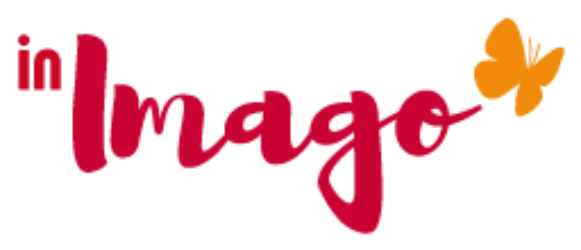Growth hacking is a way of hacking its growth by acquiring traffic on all web channels by creating digital experiences inviting prospects to discover a website.
In other words, the goal is to significantly increase the volume of users or revenue, or even the impact of your business, with the minimum possible expense and effort.
It is also a web marketing technique and above all a state of mind at the service of growth, from the world of American e-service start-ups such as Airbnb, Facebook, Dropbox, Groupon, Instagram, LinkedIn, Pinterest, Twitter, YouTube,
The 5 building blocks for acquiring a prospect…
The first step is that to attract visitors to your website, your business must be visible on the Internet and keep your prospect active on your web portal throughout their user journey.
So, once the prospect is surfing on the page (acquisition phase), it is necessary to make sure that he is interested in the site then that he carries out his first action (ex: register, subscribe to a newsletter …) and finally that he has a first satisfactory experience of the product or service.
The Growth hacker, or pirate * will use the AARRR principle (Acquisition, activation, retention, referral, revenue). This principle represents the lifecycle of a digital customer.
1 / User acquisition: all channels (search, display, emailing, sms, public display, social networks, TV, etc.)
2 / Activation: how to encourage users to take the desired action on your site (improving page conversion rates, testing messages, UX testing)
3/ Retention (for subscription) / Reorder (for ecommerce)
4/ Revenue : how to improve turnover (price test, different offers, upsell, cross sell)
5/ Referral : how to get your customers to promote your product / service
*The pirate name is used for the associated intention of bypassing usual marketing techniques.
The choice of keywords as a lever for the customer acquisition strategy
To set up a Growth hacking strategy, you must first have a product suited to your market and therefore have a Business plan or, in their Agile version, a customer experience to establish your Business Model Canvas or Lean Startup Canvas.
The questions to ask will be:
1/ Have a product-market fit: are you sure your product has a market? If so, is it big enough to get started? What is my competition? How mature is the market? Is your product / service sufficiently differentiating (profit, price) compared to the competition (often be careful if no competitor = no market)?
2/Knowing your customers is the essential step, all the rest of the growth hacking steps will result from this knowledge.
How to get to know your customers?
Go interview them, ask them questions: what are their “pain points”? Why did they buy your products / services?
Could they do without it?
Would they recommend them to friends? etc .. (see the Job to be done method detailed by Intercom in particular).
Knowing your customers and their needs will allow the establishment of the list of keywords that the prospects will use and will facilitate your referencing.
Are growth hacking personas useful?
Personas are useful if they match your real customers. Unfortunately very often, they are carried out by marketing agencies and go up general trends.
The persona or buyer persona will be made after the questioning and your customer surveys.
An example in the tourism industry, for the launch of a net in the trees
The persona is refined in order to clarify the clientele that the website will address. 4 targets are defined: business tourism with seminars, families and especially slow tourism for a green experience, event such as bachelor party or groups of children.
For each of these 4 audiences, the following questions must be clarified: What are their pain points? find seminar rooms? room prices? Activities where social distancing is respected. Research: – Would product / service X be of use to them? If so: would they buy it? – Know more about the target compared to the product -> we create buyer persona
This is when growth hacking comes in: – We test our idea (very important before fully launching) – We iterate – We retest – Etc
From the moment the right product / service is found:
- We use the AARRR framework as detailed above
We use the AARRR framework as detailed above
and for keywords: – If search (Google Ads) and SEO (natural referencing) were identified as levers to be activated to target your audience, then you will need to create content and buy keywords on google by relation with the requests of the target.
Growth hacking from a digital tools point of view
You do not need digital tools, the main thing is to know your customers perfectly, to define the KPIs that will be essential for you to measure your efforts.
If you had to define only one KPI, which one would it be?
Do not fall into the trap of “Vanity metric” such as number of clicks, number of shares, number of page views.
In short, no Growth hacking without preparatory work
In summary, the preparatory work is essential to 1- ensure that your product has a market and that it differentiates itself from its competitors 2- know its target, its customers by going directly to discuss with them 3- define a measurement indicator of effort. Then, this preliminary work done, you entrust everything to internal or external developers, or you use wordpress or Unbounce to build your platform and you measure the success with your KPI’s, which you no longer need, since your sales are soaring!
Growth hacking is therefore a customer experience which in order to function requires a lot of tests and retests based on concrete experiments and daily monitoring.
So it’s hard work that takes a lot of time. It is by practicing very regularly that we end up having results. An isolated experiment doesn’t make much sense and you will have a hard time interpreting the results. But the subject is fascinating!
Customer culture and growth hacking
It is difficult to know if growth hacking is part of customer culture, but asking a customer without worrying about their needs and how the company will respond to them would not make sense.
Therefore, it will be easier to experience a product, a user journey and obtain feedback on its products if the company is customer-centric.
The corporate culture will contribute to its notoriety and its e-reputation, and will allow the company to establish a permanent dialogue with its customers.
Thank you to Romain BOYER ,Baptiste FLEURY, and Remi Janot for this article from our discussions on linkedin

